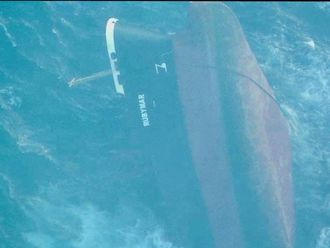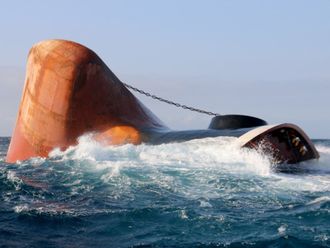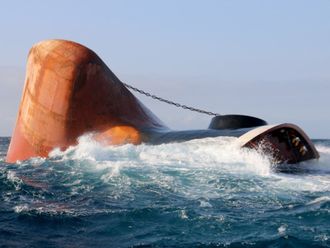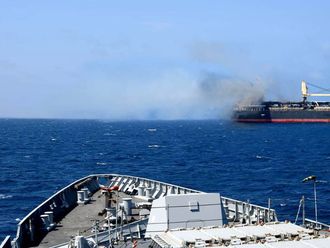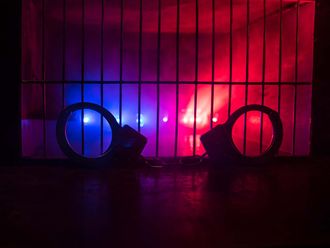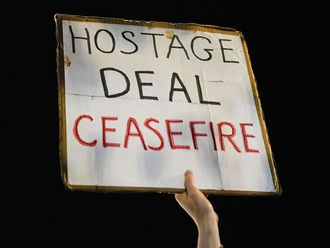Washington: An American journalist held hostage in a remote part of eastern Yemen by Al Qaida’s affiliate there was one of the main targets of a predawn raid carried out this week by US Special Operations commandos and Yemeni troops, according to US and Yemeni officials.
But when the commandos swooped in on the mountain cave where they believed the American was being held, they found eight other hostages, including six Yemenis, but not the American.
At the request of the Obama administration, The New York Times withheld this information in an article published online on Tuesday and in print on Wednesday out of concern that the publicity could jeopardise the American’s safety and future rescue attempts.
But in Yemen on Wednesday, the military gave an account from a freed hostage who told his rescuers that five other hostages — including the American journalist as well as a Briton and a South African — had been moved from the cave two days before the raid.
The Yemeni account of the rescue operation appeared in a report published on a Defence Ministry website, known as 26 September, that Yemeni military officials frequently use to disseminate details of their operations. The details in the report were provided by a Yemeni counterterrorism soldier identified as Abu Ma’arouf, who participated in the rescue operation, according to the website.
The New York Times is withholding the name of the American journalist.
The National Security Council and the Defence Department declined to comment. The journalist’s family has not responded to emails seeking comment about his captivity.
The commandos’ risky dash into a remote, oil-rich province crawling with militants belonging to Al Qaida in the Arabian Peninsula was organised on short notice, within two weeks of a request from President Abd Rabbo Mansour Hadi of Yemen to help rescue the captives, US officials said.
‘Enduring partnership’
About two dozen members of the Navy’s elite SEAL Team Six, joined by a few American-trained Yemeni counterterrorism troops, flew secretly by helicopter to a location in Hadhramaut province near the Saudi border, according to officials from both countries. The commandos then hiked several hundred yards in the dark to a mountainside cave, where they surprised the militants holding the captives.
The operation appeared to be at least partly an attempt to bolster the stature of Hadi, a committed but beleaguered US ally whose authority was badly undercut when Al Houthi rebels suddenly seized control of Yemen’s capital in September.
In a sign of the administration’s concern for Hadi, Lisa Monaco, President Barack Obama’s counterterrorism adviser, called the Yemeni president on Wednesday to commend the efforts of his new government to carry out changes it promised after Hadi’s predecessor, Ali Abdullah Saleh, stepped down two years ago, according to a statement issued by the White House.
“Ms Monaco and President Hadi also reaffirmed the enduring partnership between the United States and Yemen to counter the shared threat from Al Qaida in the Arabian Peninsula,” said the short statement, which made no mention of the hostage rescue.
In the report on the Defence Ministry website, Abu Ma’arouf said that the intelligence that led to the raid included information that Al Qaida had transported 11 shackled hostages to a cave about 104km from Seiyun city, near the border with Saudi Arabia.
“The intelligence investigation indicated that among the hostages were some foreigners,” Abu Ma’arouf was quoted as saying, while adding that the rescue plan called for “30 airborne antiterrorism soldiers.”
The report made no mention of the role of US forces in the rescue effort. Abu Ma’arouf said that Yemeni forces stormed the cave, setting off clashes with seven militants who were killed instantly. One Yemeni soldier was slightly injured in the clashes, the article said.
During the evacuation of the freed hostages, Yemeni troops found mobile phones and documents linked to Al Qaida, according to Abu Ma’arouf, who said that one of the freed hostages told Yemeni soldiers that the five other hostages who were moved included an American journalist, as well as citizens of Britain, South Africa, Turkey and Yemen.
No names were provided for the hostages who were moved, except for the Yemeni citizen, who was referred to in the article only as “Al Habshi.”
It may have been a reference to a Yemeni man, Rashid Al Habshi, who was kidnapped in June and accused by Al Qaida in a recent statement of being a senior intelligence agent who collaborated with the United States. Al Habshi’s family has said that while he once worked in Yemen’s security services, he quit his post almost a decade ago and worked in a government-run electricity company.


